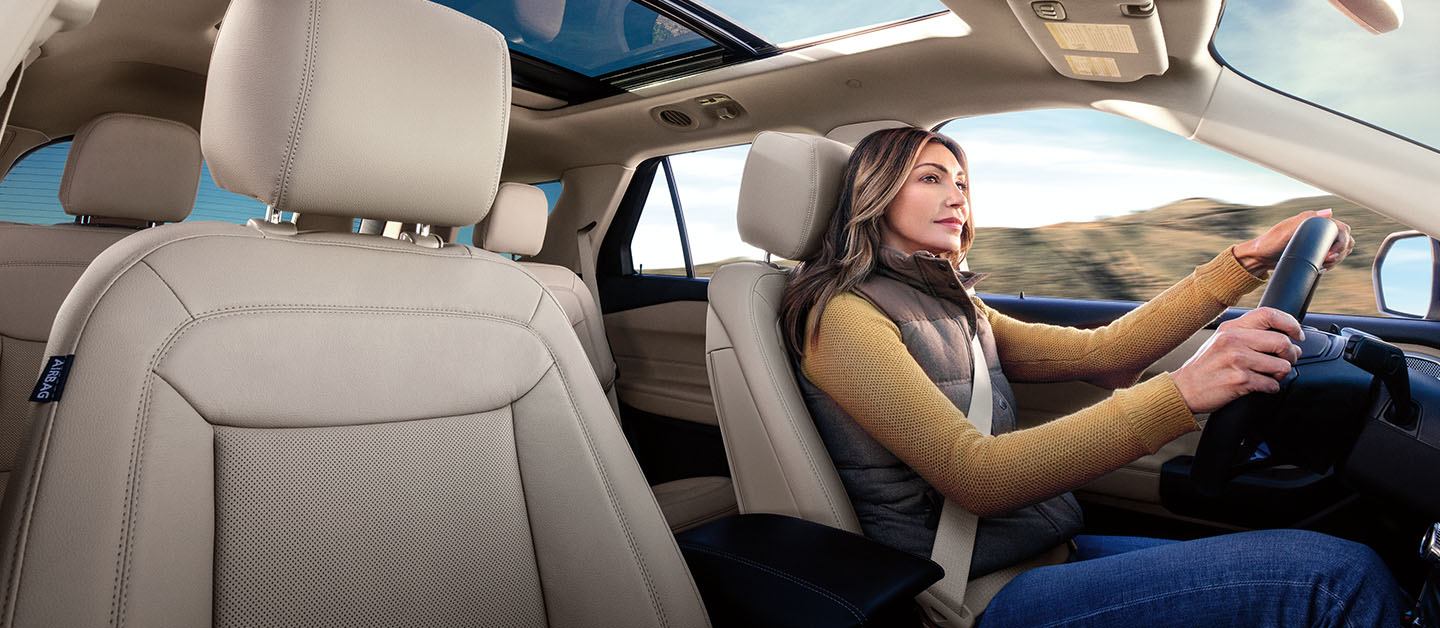Driving Precautions | Tips | Ford Puerto Rico

Tips
Driving Precautions
Driving Tips
When the temperature rises, treat your vehicle the same way you treat yourself – take some extra precautions to stay cool and in control to help avoid trouble.
Preparing your Ford Vehicle for Hot-Weather Driving
The expert service technicians at your Ford Dealership are the best source for everything you need to get your vehicle ready for summer driving or a family road trip through the desert. Here’s what you can have them do:

Check engine coolant
If your coolant level is low or your coolant has lost its strength over time, you run a greater risk of overheating your engine.

Test the battery
Your battery may start harder in winter weather, but it may actually work more in hot temperatures. An inspection at your Ford or Lincoln Mercury Dealership will help reveal if your battery still has the power to perform reliably.

Change your oil and filter
This is always a must for your vehicle, and it’s especially important in hot conditions. Proper lubrication with the right grade of clean oil and a fresh oil filter helps your engine endure the stress of extreme heat.

You need your fluids
Brake fluid, power steering fluid and windshield washer fluid should all be topped off as a precautionary measure.

Inspect the air conditioner
If your climate control isn’t working properly, you and your passengers can get very uncomfortable. A dealership service technician will check for leaks in the A/C system and add refrigerant if needed.

Check the wipers
Extreme heat and sun exposure will wear down the effectiveness of your windshield wipers. If they streak or smear, it’s time for new wipers.

Make sure tires are properly inflated
Underinflated tires rob you of gas mileage and are also a safety hazard. Overinflated tires can also wear out tires prematurely and create unsafe handling. Check your tire pressure frequently to make sure you’re within the manufacturer’s recommended limits, since tire pressure can actually increase as the temperature rises or road friction builds up heat. Also check your spare tire regularly to keep it properly inflated.

How To Drive In Mountainous Terrain?
Most roads and highways that cross elevated terrain are largely smooth and present little risk. However, some require extra skill to maneuver safely and with as little wear on your vehicle as possible.
- Avoid driving crosswise. You could lose traction and slip sideways if you drive crosswise or turn on steep slopes. Drive straight up, straight down, or avoid the hill completely. Know the conditions on the other side of a hill before driving over the crest.
- Start in a low gear. When climbing a steep hill, downshifting can put strain on the engine and possibly lead to stalling. Starting the ascent in a lower gear is better than downshifting later.
- Be courteous. If you’re driving a heavy recreational vehicle or hauling a trailer up a long mountain slope, pull over and let other vehicles pass when you can do so safely.
- Don’t ride your brakes. When traveling down steep grades, riding your brakes to keep your vehicle’s momentum in check puts unnecessary strain on your braking system and lead to overheating. If you're driving a manual transmission vehicle, shift to a low gear before beginning your descent to let the engine slow your vehicle instead.
- Take it slow. Observe all posted speed limits on curves, inclines, declines and straightaways.
- Plan ahead. Most roads that are particularly winding or hilly are clearly marked. Still, before your mountain trip, plan your route around the least difficult roads, especially if you are not confident that your camper, trailer or recreational vehicle can handle the terrain.


